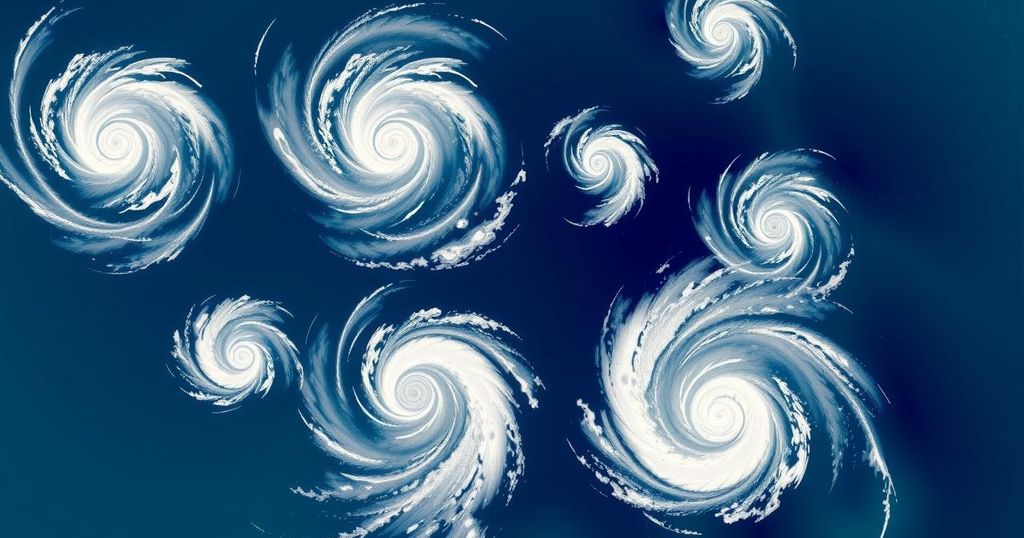Simultaneous Cyclone Activity: Nature’s Rare Meteorological Phenomenon
On Tuesday, six tropical cyclones were simultaneously active in the southern hemisphere, with significant pressure in the Pacific region. Severe Tropical Cyclone Alfred reached a category-4 status near Australia, while Cyclones Rae and Seru caused notable damage in Fiji and the Solomon Islands, respectively. Severe Tropical Cyclone Bianca operated in the Indian Ocean and two more cyclones were recorded near Madagascar, showcasing the remarkable climatic dynamics.
On Tuesday, a rare meteorological event occurred with six named tropical cyclones active simultaneously in the southern hemisphere, notably clustered together. Three of these cyclones developed in the south-west Pacific, with Severe Tropical Cyclone Alfred forming on February 20 in the Coral Sea. Achieving category-4 hurricane status, Alfred has sustained winds of 105 mph (170 km/h) and gusts nearing 140 mph, moving along the Queensland coast with warnings issued for adverse weather conditions.
To the east, Tropical Cyclone Rae and Tropical Cyclone Seru emerged as brief storms, each reaching category-2 hurricane intensity. Rae formed near Fiji on February 22, traversing the island and causing considerable damage through flooding, high winds, and massive waves. Conversely, Seru developed on February 24 over the Solomon Islands and moved southward, remaining offshore while also impacting the surrounding regions.
Severe Tropical Cyclone Bianca was active from February 18 to 27 in the Timor Sea and the south-east Indian Ocean. This cyclone reached a maximum intensity equivalent to a category-3 hurricane, navigating around Australia without making landfall.
Meanwhile, two additional cyclones in the south-west Indian Ocean bracket Madagascar. Intense Tropical Cyclone Garance, with category-3 equivalence, formed northeast of Madagascar, moving southwards and set to impact Réunion Island with high winds and substantial rainfall. Additionally, the category-1-equivalent Severe Tropical Storm Honde formed in the Mozambique Channel, skirting the southern tip of Madagascar.
Although the simultaneous occurrence of six named storms is infrequent, it is not entirely unusual. The Pacific Ocean’s record of six concurrent named storms was noted once in August 1974, while the Atlantic has seen five storms at the same time, set in September 1971.
In summary, Tuesday’s occurrence of six simultaneous tropical cyclones in the southern hemisphere is a significant meteorological event, with cyclones Alfred, Rae, Seru, Bianca, Garance, and Honde each playing crucial roles. Alfred’s proximity to the Queensland coast, along with Rae’s destructive impact on Fiji, underlines the importance of vigilant monitoring. While concurrent cyclones are rare, this event highlights the capabilities of meteorological systems to track these formations effectively.
Original Source: www.theguardian.com




Post Comment